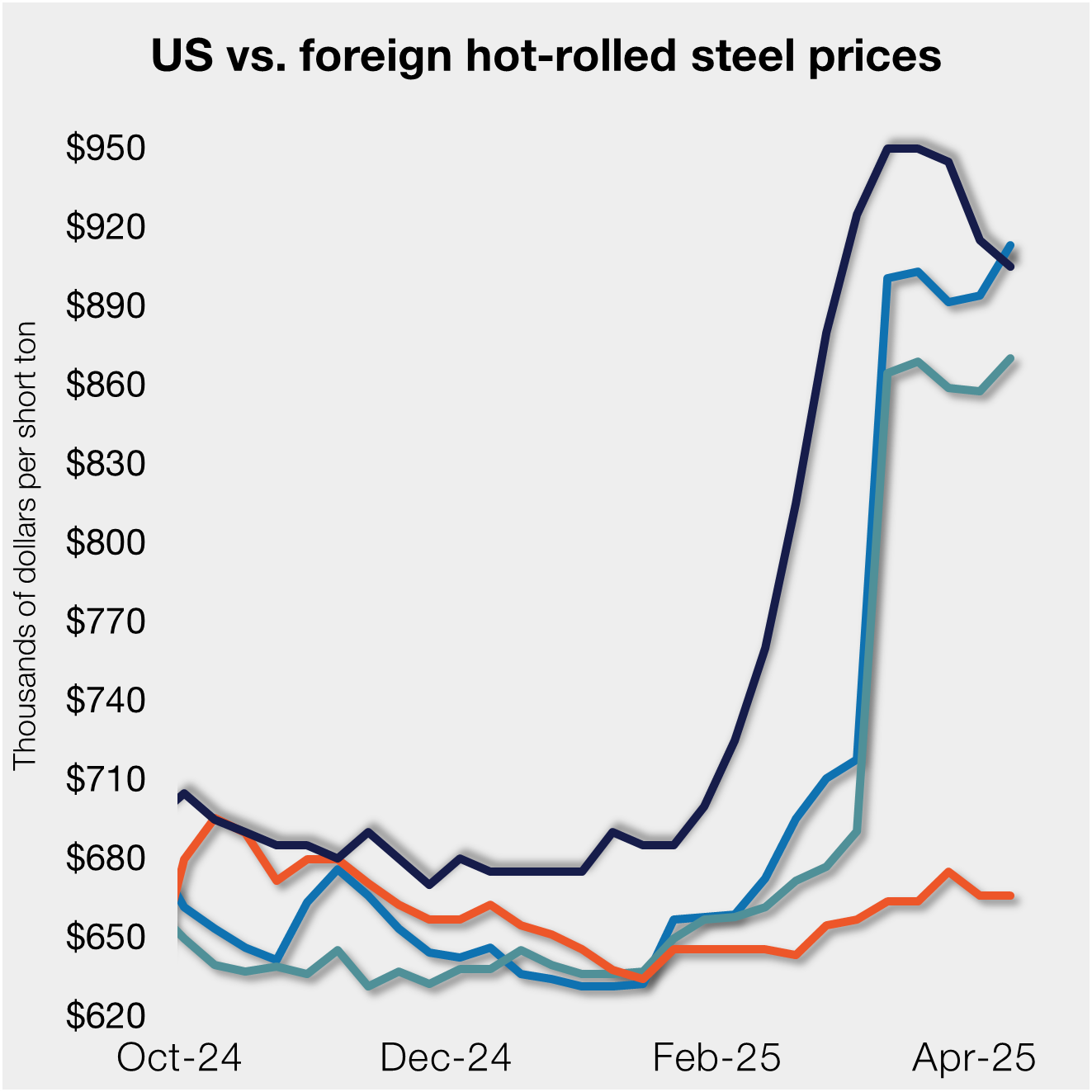Steel Products

Top 10 Reasons Section 232 Tariffs Probably Won’t Go Away Anytime Soon
Written by Tim Triplett
October 14, 2018
How long will the Section 232 tariffs on steel and aluminum imports remain in place? There is no way to know for sure. But supporters, including various trade and government officials, make a strong case that the tariffs are likely to remain in force for some time to come.
President Trump announced the 25 percent tariff on steel imports and 10 percent tariff on aluminum imports back in March on national security grounds. Metal products unfairly traded on the world market pose a threat to the viability of the domestic steel and aluminum industries, which are essential to the nation’s defense, the administration maintains.
Primary arguments supporting a long-term timeline for the tariffs can be summed up in the following Top 10 list:
- There is no short-term solution to the long-term problem of global steel overcapacity. The duration of the tariffs will depend in part on how other countries respond and work with the U.S. to reduce the excess production and dumping of steel on the world market.
- Section 232 is just one tool the administration is using to address steel overcapacity and unfair trade practices. The effectiveness of other measures, such as Section 301 and antidumping and countervailing duties, will factor in to how long Section 232 is needed.
- The Department of Commerce investigation identified 80 percent capacity utilization as the level needed to assure the long-term health of the domestic steel industry. Obviously, many economic factors are at play in the market. So, how long Section 232 is needed will depend on when all market conditions have improved to the point that 80 percent is sustainable.
- The market will need time to adjust to the higher steel prices necessary for domestic steelmakers to remain profitable on a sustained basis. The natural consequence of global overcapacity has been to depress prices. The goal of the tariffs is not to make prices artificially high, but rather to correct prices that have been artificially low as a result of unfair trade practices by other nations.
- The tariffs impact not only producers, but distributors and ultimately the end users of steel and aluminum. It will take considerable time for the supply chain to work through the complex process of rebalancing the market.
- There needs to be one full investment cycle for the steel industry to achieve a production level that is sustainable. With $7 billion in new cap ex in the U.S. steel industry since Section 232 was announced, companies will need time to recoup that investment.
- Trade actions are not unique to the United States. When other nations restrict imports, the goods are often redirected to the U.S. Trade actions such as Section 232 are necessary to keep the U.S. from becoming a dumping ground for the world’s excess capacity.
- As long as they are in force, the Section 232 tariffs will help to dissuade other developing countries from emulating the Chinese model of a state-driven rather than a market-driven economy.
- The fact that the Trump administration managed to keep the Section 232 tariffs in place even as it negotiated a new “free trade” agreement with Canada and Mexico demonstrates its resolve.
- Finally, there is no statutory limit on how long the tariffs can remain in force. That is up to the administration in Washington. The next presidential election is two years away.
{loadposition reserved_message}

Tim Triplett
Read more from Tim TriplettLatest in Steel Products

SMU flat-rolled market survey results now available
SMU’s latest steel buyers market survey results are now available on our website to all premium members. After logging in at steelmarketupdate.com, visit the pricing and analysis tab and look under the “survey results” section for “latest survey results.” Past survey results are also available under that selection. If you need help accessing the survey results, or if […]

CRU tariff webinar replay now available
CRU’s latest webinar replay on how Trump’s tariffs affect the global steel market is now available on our website to all members. After logging in at steelmarketupdate.com, visit the community tab and look under the “previous webinars” section of the dropdown menu. You’ll find not only this special CRU webinar but also all past Community […]

US, offshore CRC prices diverge
US cold-rolled (CR) coil prices declined this week, slipping for the first time since early February. Most offshore markets deviated, moving higher this week.

Construction growth slowed in March on tariff woes: Dodge
The decline comes after reaching a record high in January to kickstart the year.

Return of S232 zapped gap between US and EU HR prices, Asian HR remains cheaper
Domestic hot-rolled (HR) coil prices declined this week for a third straight week. Most offshore markets bucked the trend and gained ground. Uncertainty in the US market around tariffs, especially after “Liberation Day,” caused US prices to slip as buyers moved to the sidelines. It’s unclear to date whether the 90-day pause on the more […]
